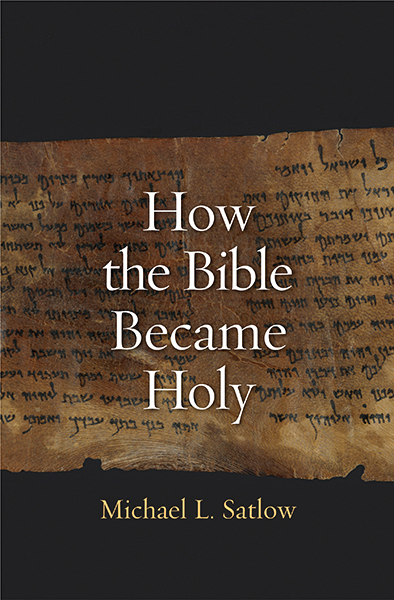How the Bible Became Holy
By Michael L. Satlow (Yale University Press, 2014)
“Words create communities.” This delicious little notion has inspired revolutions—think a certain conflict in 1776 that birthed a nation with the words life, liberty, and the pursuit of happiness. When people embrace words they deem to be sacred, remarkable things happen. But how do words—those pedestrian building blocks of communication—take the leap to sacred? Michael Satlow, Professor of Judaic Studies and Religious Studies at Brown University, is the sort of fellow who asks such questions.
Satlow challenges his own premise with an equally daring notion: “There is nothing natural about a community based on the writing or reading of texts.” So words create communities—but texts are another matter entirely? We’re invited to consider that for most of history, communities formed around blood lineage, shared traditions, and oral stories. But gathering around a text requires crucial prerequisites: literacy, the accepted authority of the author, and the conviction that the text conveys meaning. At what point did the oral traditions of Israel move from fluid history to immutable sacred text?
For some believers, scripture is a holy book that fell from heaven into our sanctuaries. It’s not Satlow’s mission to bolster that faith or to set church and synagogue on divine foundations. He writes for the biblically adventurous and curious reader who will find the sheer range of ideas here dazzling. This book does all your homework for you: archaeology and anthropology, history and philosophy. His inquiry is divided three ways: the Hebrew story of kings and prophets; the era of scribes and priests; and Jesus, Paul, and the advent of the rabbis. How are religious ideas transmitted, revised, recombined, and re-imagined by liquid oral history? How do such ideas become manuscripts and these manuscripts morph into scriptures? How does it affect the God-quest when malleable traditions are trumped by fixed texts? Let the arguments begin!
This review appeared in the February 2016 issue of U.S. Catholic (Vol. 81, No. 2, page 41).












Add comment